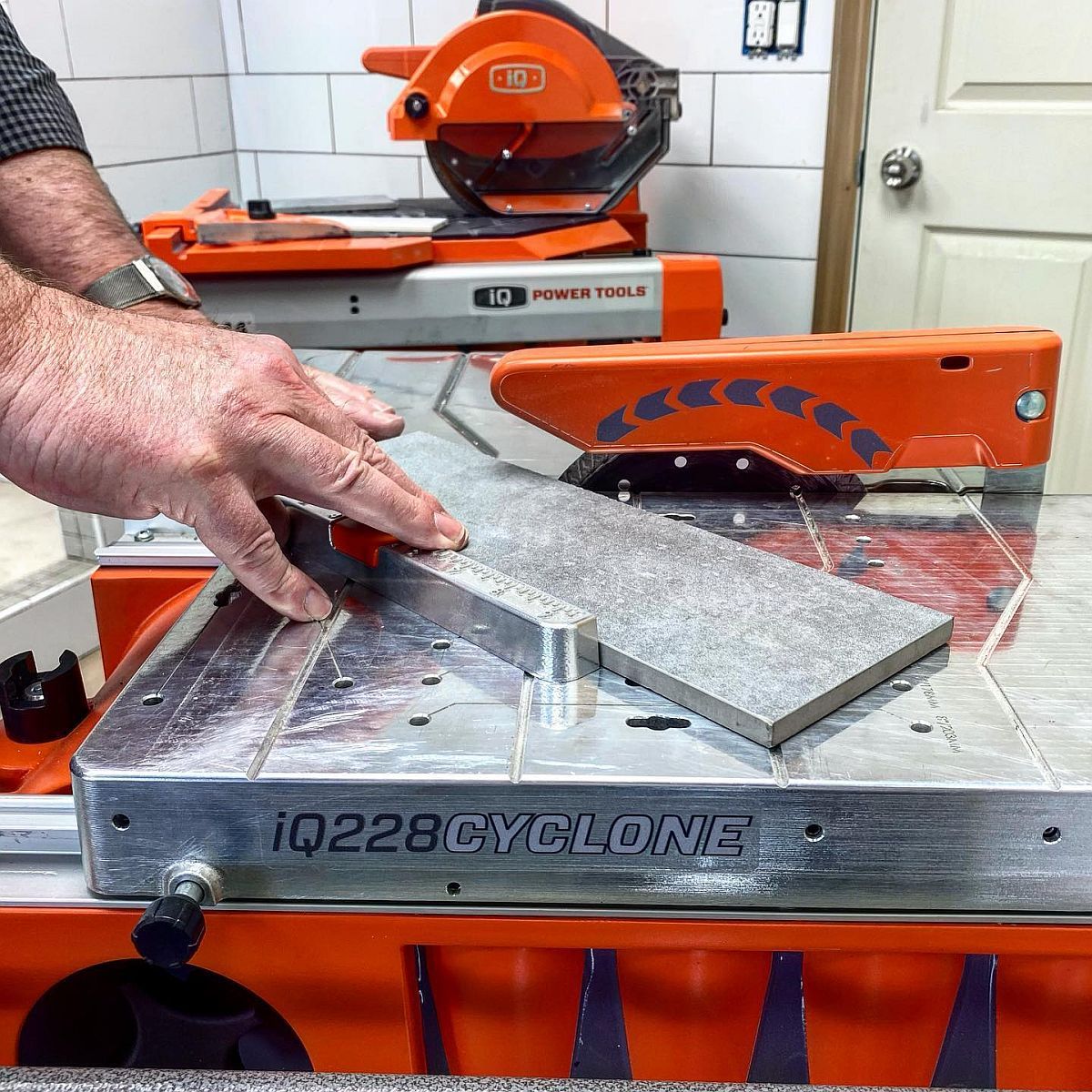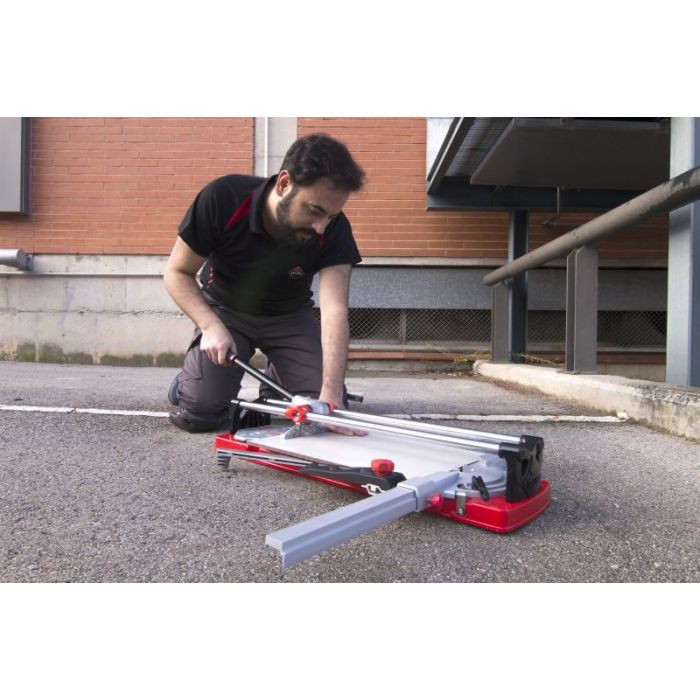When it comes to cutting tile, accuracy and efficiency matter. Nothing delays a tile job like lots of cutting and trimming – whether it’s for an intricate design or adjusting for drains and fixtures, every minute spent cutting is time not spent laying tile or applying grout. Great installers know tile cutting is the key to an efficient project, and happy customers. Here are a few tips from the pros:
Tile Snappers or Cutters – Scoring makes the difference. When it comes to tile snappers getting a straight cut without cracks is crucial. Take a few extra moments to double-check measurements and start with the cutting wheel at the bottom edge. Move the wheel like you’re cutting pizza, with a firm, even and consistent movement and pressure. The mistake many new installers make is using too much downward pressure, which can cause cracks. You may want to score your cut twice, but more than that is likely to do more harm than good.
Pro tip – if you’re working with a tile that is new to you, practice on a scrap piece or two to get a feel for how the tile interacts with your snapper.
 Tile Saws – Tile saws are either wet or dry, and most professionals prefer the table-saw style, which allows for more accuracy and fast, consistent cutting. Wet saws have been the traditional go-to for installers, creating clean edges with no cracking and a polished feel. Wet saws eliminate dust, but add complexity and mess if the saw creates overspray. Accuracy can be more challenging with wet saws if spray hampers visibility.
Tile Saws – Tile saws are either wet or dry, and most professionals prefer the table-saw style, which allows for more accuracy and fast, consistent cutting. Wet saws have been the traditional go-to for installers, creating clean edges with no cracking and a polished feel. Wet saws eliminate dust, but add complexity and mess if the saw creates overspray. Accuracy can be more challenging with wet saws if spray hampers visibility.
Dustless dry-cut tile saws are the latest option for tile pros, providing the advantages of a table base for cutting, without the overspray or mess that comes with a water saw. A quality dustless saw means less cleanup and easier use.
Regardless of which saw you prefer, it will only be as good as the blade. Choose a premium diamond blade for fast, smooth cuts.
Pro Tip – Use a dressing stone regularly on your cutting blade to expose fresh diamonds and revitalize a dull cutting surface. Always dress your blades dry for the best results.
Nippers – Just as the name implies, tile nippers “nip” away small portions of tile and are perfect for irregular cuts. Nippers with carbide blades and compound leverage can make the job easier and more accurate. This is an area where practice makes perfect, and inexperienced tile setters can use scraps to refine their technique.
Hole Saws – Diamond hole saw bits are the go-to choice for professionals who want to make clean, smooth holes in tiles to fit around shower head pipes and other fixtures. Remember, holes near tile edges are more likely to crack, so laying out the project in advance can help.
Pro Tip – Start slowly until the hole is created, and then speed up to a medium speed. Going too fast or applying too much pressure will overheat the drill bit.
The common theme in all of these tips is using the right tool for the job, and choosing a professional grade, quality tool for consistent results day-in and day-out.

